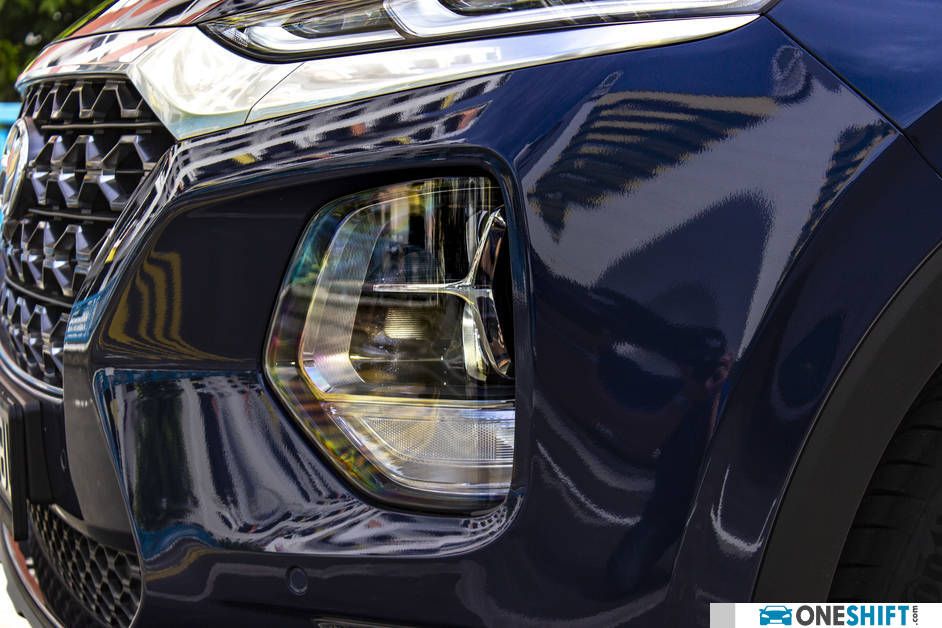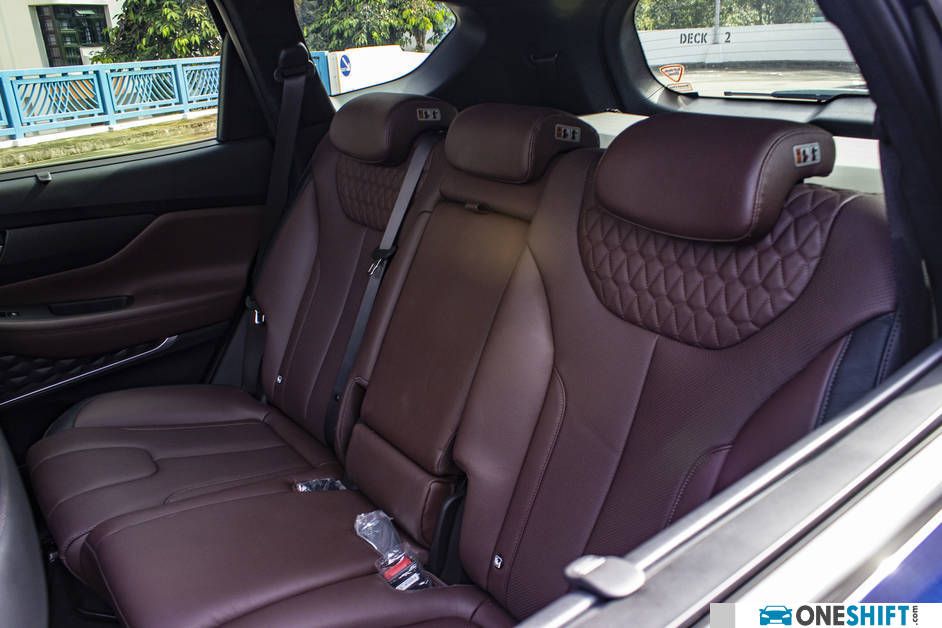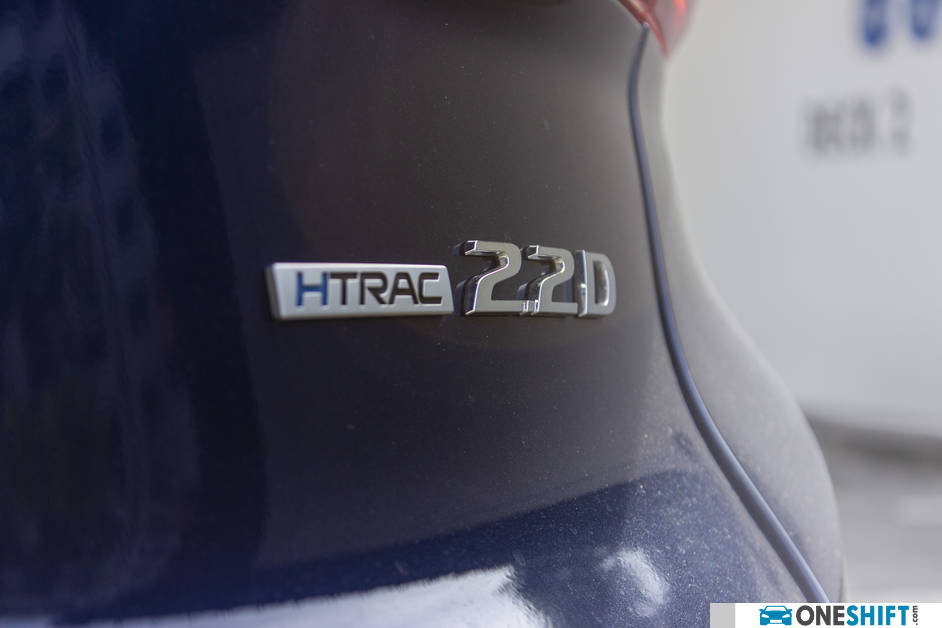Work Horsing Around
The SUV has also taken on the role of the traditional MPV, by being able to carry up to seven, while being a practical solution for those who may have difficulties with entering and exiting a lower vehicle… Which brings us to find out why did Hyundai field two-of-the-same car. We tested the 2.4 litre petrol naturally aspirated Santa Fe a while back, and found its versatility impressive. But does a turbocharged diesel with added torque make Hyundai’s largest SUV available here even better?


The SUV has also taken on the role of the traditional MPV, by being able to carry up to seven, while being a practical solution for those who may have difficulties with entering and exiting a lower vehicle… Which brings us to find out why did Hyundai field two-of-the-same car. We tested the 2.4 litre petrol naturally aspirated Santa Fe a while back, and found its versatility impressive. But does a turbocharged diesel with added torque make Hyundai’s largest SUV available here even better?

The new Santa Fe sports the brand’s current SUV design language, with its “squinty” LED daytime running light assembly, which sits above a stacked headlamp cluster, and flanks its Cascading Grill design.

There is also greater attention paid to detailing the side profile of the car, when compared to the previous Santa Fe. Rear headlamps also feature a unique 3D effect, with the lenses extending to the side of the bodywork to add a little more flare in styling.

A larger car also means more passenger room, with second row passengers afforded an additional 38mm in legroom, while the added 18mm in seat height contributes to better packaging. At the rear, were a 5+2 seater SUV tends to be weak in passenger accommodation, Hyundai managed to squeeze an additional 22mm in headroom. Rear seats however still lack much needed thigh support, although they do fold flat for loading purposes. A small consolation though, adjustable air-conditioning is provided at the back.


Front passengers benefit from ventilated seats (very important in our tropical weather), and are they are electrically adjustable for added convenience. The driver��’s seat also benefits from two memory settings and an electric cushion extension. Thanks to the amount of glass used, light entering the cabin helps to “lift” it a little, and all-round visibility has been greatly improved upon.

We liked that Hyundai had not gone down the path fake wood inserts into the door cards and onto the dash, but have done the reverse approach of unapologetically still using plastic inserts, but with just a hint of “woodyness”.

The dashboard’s accuracy-of-fit is impressively close to the offerings of some German sub-luxury brands. Switches and buttons are large and easy to locate, while there is a good amount of leather used.
Behind the wheel, those with a keen eye would be able to identify the BMW-influenced cluster, which features a 7” digitised display, flanked by an analogue rev counter and gauges. Features like wireless charging for mobile devices, adds extra points to practicality.

Cargo space with all seats deployed stands at 130 litres, and offers up to 547 litres, with the rear row folded; and with the middle row lowered, swallows up a good 1,625 litres. As a plus, the middle seats can be remote-folded.

Diesels are becoming quite a rare breed these days, thanks to the Vehicle Emissions Scheme (VES), putting a dampener on these efficient engines.
Hyundai’s 2.2 litre common rail turbocharged diesel is rated at 197bhp, and delivers an impressive 440Nm of torque at 1,750rpm. The engine does need a moment to allow the turbocharger to spool up, before the surge of torque is felt. The petrol version of this car delivers smoother-direct delivery and a quieter engine note. This diesel on the other hand, comes across as a little agricultural, with its characteristic clatter slightly penetrating the rather well-insulated interior.

The diesel Santa Fe delivers a century sprint time of 9.3 seconds, the petrol does this in a more leisurely 10.4 seconds. Cogs are swopped through an 8-speed automatic transmission, with a good degree of smoothness. The SUV is not designed as something to be driven in a spirited manner, and the HTRAC 4wd system delivers its drive in front-biased manner, where it only transfers power to the rear end, when there is a need for more grip.
Thanks to its longer suspension travel, ride quality is very good, and seats in the front and middle rows offer quite a good amount of passenger comfort.

Brake assistance is actually decent on the Santa Fe. Most Korean cars I have driven, tend to not have enough boosting.
There is good all-round visibility, and Hyundai has also included safety features like its Blind-Spot Collision-Avoidance Warning (BCW), which relies on radar sensors embedded in the rear bumper to warn drivers of cars approaching your blind spots. This same group of sensors are also utilised for its Rear Cross-Traffic Collision-Avoidance Warning (RCCW) system, which acts as an additional set of eyes, as you back the vehicle out, warning you if there is any oncoming traffic or pedestrians.

Child safety is also a major priority in their design brief. The Santa Fe features Rear Seat Occupant Alert, which detects movement in the rear seats, and informs the driver through an alert on the instrument cluster, and even sounds the car alarm, if it detects that the driver has left the vehicle; no more excuses for leaving kids or pets in the vehicle.
As an additional layer of protection, rear doors are guarded by Safe Exit Assist, which senses if vehicles are coming from the rear, and ensures that child safety locks are kept activated, preventing the doors from being opened from the inside.
Perhaps the diesel version of the Santa Fe delivers the goods a little quicker than its petrol-powered sibling (pun intended). But the only way to justify that additional $8,000 difference in purchase price, is if you are a high mileage user.
Credits:








Get the Best Price for your used car
from 500+ dealers in 24 hours

- Convenient and Hassle-Free
- Consumer Protection
Transparent Process
With No Obligation








